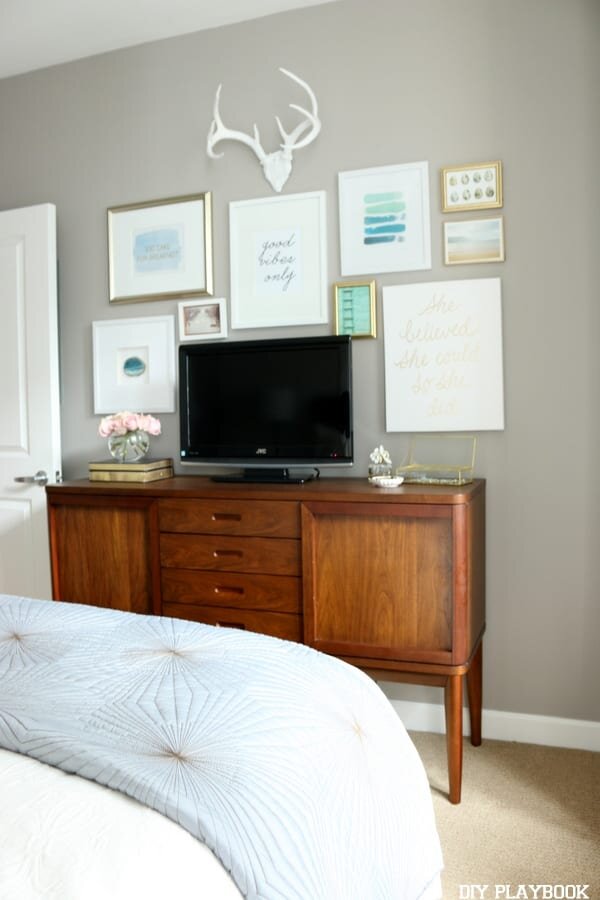How did the predictions hold up?
Every year interior designers predict what will be popular in the coming year. We thought it would be more interesting to see how this year’s trends were holding up. Although dozens of trends are suggested every year, we selected 9. We’ve taken a look at different ways to see how a trend is doing and sorted them accordingly.
Rattan & Wicker Indoor Furniture
While these have been an outdoor staple for years, they’re moving indoor. Sadly, we only see this trend, hanging on for another year or so. It’s already proliferated through many different catalogs and big box stores. That is usually the dying knell for a trend.
Birds and Botanicals
The beautiful plumage of birds or the old school illustrations of plants of all types that’s what is ‘all the rage’ according to designers for 2020. Both are making a boom (and often together) from wall art, to fabrics and wallpapers. Although this one scored the same as the rattan and wicker furniture, we’re torn. On one hand, it’s already spread everywhere. You can find it across multiple industries, and price points, which are major signs that a trend is going to die. On the other hand, there’s enough variety in the concept of ‘birds and botanicals that it could easily continue for ages.
Daybeds
Although there isn’t much difference between a daybed and a normal bed, other than the frame, this is a trend. More people are making their guest rooms serve multiple purposes as offices, but still need a bed or seating, just in case. Although daybeds have been found in many big box stores, we haven’t seen them at a variety of price points, nor have they ended up in discount stores yet. We expect this trend to continue for another two years. We look forward to seeing how the different makers will differentiate themselves and their designs.
Gallery Wall TV
When we saw this suggestion at the end of last year we were shocked. Gallery walls have been a thing for years! How had we not thought to frame our TVs as part of that? Given how seamlessly this can slip into part of your existing decor, we expect this trend to be around for several years. At least until we switch to fully holographic entertainment anyway.
Orangeries
Raise your hand if you saw orangeries becoming a thing again. We certainly didn’t. But as of this year, perhaps because of Covid-19, perhaps because of other factors, growing citrus trees indoors has become very popular again. It’s hard to see how this one will work as a trend in terms of sales, unless we start seeing a large number of kits or fake plants. We think this one will stick around for another few years, but only those with a green thumb will keep it beyond that. Citrus plants are finicky after all.
Layered Patterns
For years you were told to try and match one pattern throughout a room or even your house. As of 2020 we are free though! Finally people are realizing it’s much more fun to layer patterns that work well or compliment one another into a room. Much like orangeries, this one goes beyond just selling an individual item the way some of our other trends have. It’s a matter of personal taste, mixing and matching, and we think it going to result in a greater number of thrift store finds as well. This one could go either way. However after how long neutrals and all white rooms survived, we think it will be a long while before people give up this trend.
Mending
Photo courtesy of Carson Downing
This one is a continuation of the hand crafting trend that has been building for the last decade. While it is also prevalent in clothes at the moment , we still think it’s going to stick around. The idea is that instead of throwing a piece of decor, or furniture out because it's torn or damaged somehow, you repair it. Not simply to return it to its former state, but to bring beauty to it on an entirely new level. The ideas and art of Japanese sashiko and kintsukuroi are both prominent here. We expect to see a lot of this as time goes forward.
Bold Colors Throughout
With Pantone’s color of the year being navy, we feel comfortable saying bold colors are taking over our homes. Whether you’re choosing to do it with textiles, paint or furniture, we expect this trend to stick for a very long time. After all, many people are spending more time inside their homes right now and are tired of the neutrals, greys and dusty colors of the past 5 years.
Curved Furniture
From couches to chairs, tables to mirrors, the more curved and organic shapes are in this year. Out of all the trends we looked at, this is the one we feel is barely in its infancy, but is indeed going to stay.
What do you think? Did we get these wrong? Are they going to hang on for longer than we thought? Or do you think these trends will die with the end of 2020? Let us know in the comments below or over on our Facebook page. We’d love to hear from you.
Don’t forget that if you have any trouble with your appliances, we are happy to help. We want to help keep your home running in tip top shape. Whether that’s a repair or a maintenance check up, all you need is to set an appointment over on our page.





